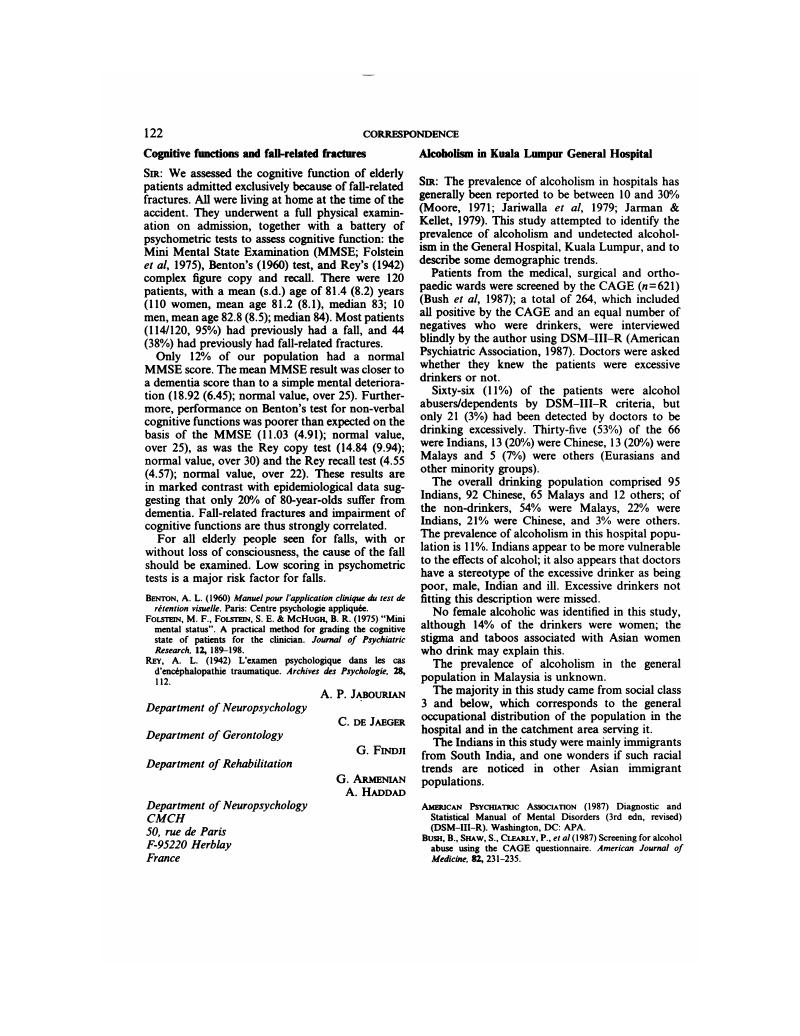Crossref Citations
This article has been cited by the following publications. This list is generated based on data provided by Crossref.
Jelicic, M.
and
Kempen, G. I. J. M.
1997.
Cognitive function and fall-related fractures.
British Journal of Psychiatry,
Vol. 171,
Issue. 1,
p.
88.
Jelicic, Marko
and
Kempen, Gertrudis I.J.M.
1998.
NO DECLINE IN COGNTTIVE FUNCTION IN OLDER PATIENTS TWO MONTHS AFTER A FRACTURE OF THE EXTREMITIES.
Journal of the American Geriatrics Society,
Vol. 46,
Issue. 9,
p.
1177.
Jabourian, Artin
Lancrenon, Sylvie
Delva, Catherine
Perreve-Genet, Alain
Lablanchy, Jean-Pierre
Jabourian, Maritza
and
Maurits, Natasha M.
2014.
Gait Velocity Is an Indicator of Cognitive Performance in Healthy Middle-Aged Adults.
PLoS ONE,
Vol. 9,
Issue. 8,
p.
e103211.




eLetters
No eLetters have been published for this article.